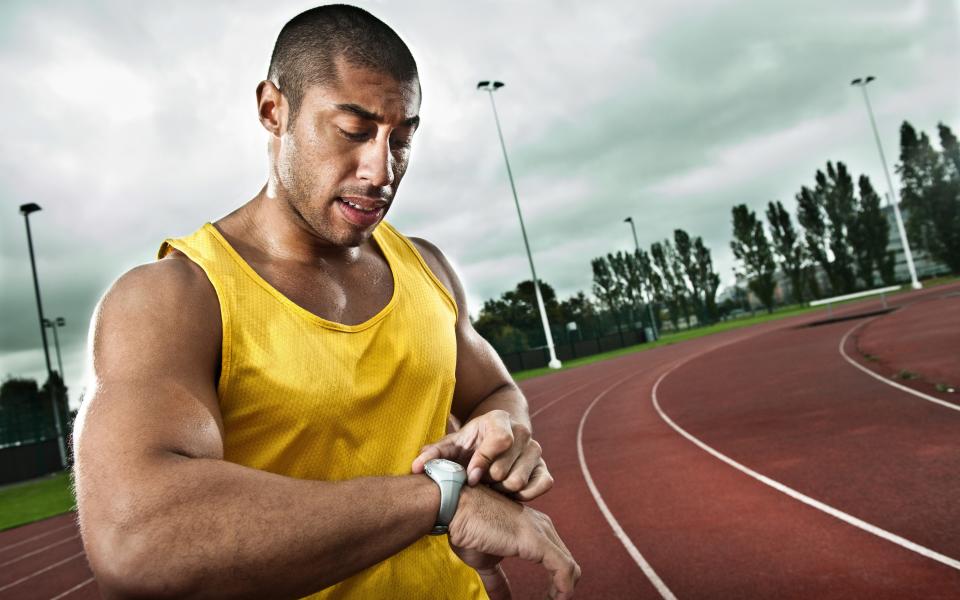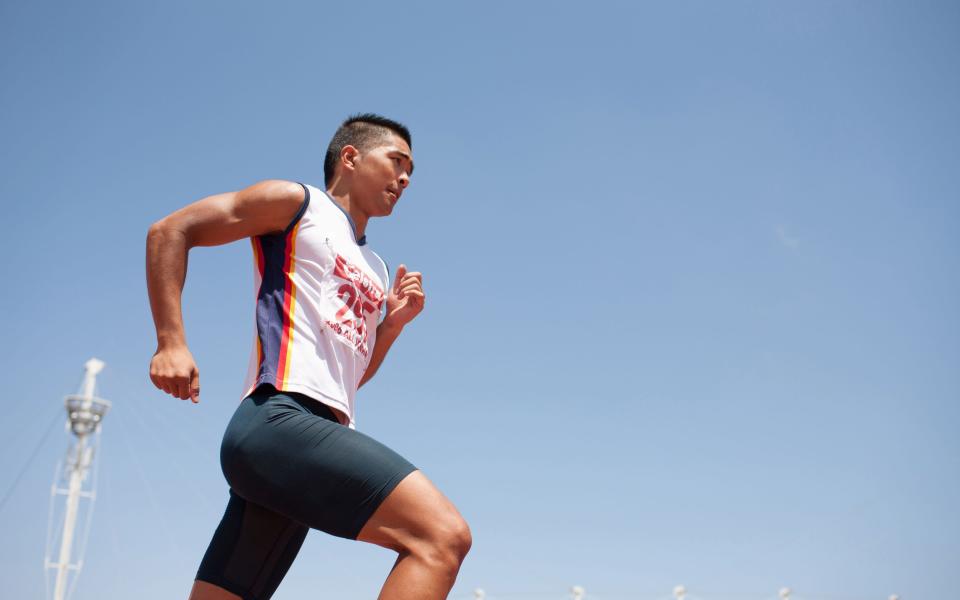From caffeine to heavy metal: 7 easy hacks to achieve a running personal best
If you’re a runner, you’ll know there is no greater feeling than knocking a few seconds off your personal best, be that for a sprint, jog in the park or ultramarathon. And if you’re not a runner, well then this article probably isn’t for you.
But how exactly can you achieve that rush, aside from boring, effortful things like training harder and improving your technique? Fortunately, shortening your PB needn’t be all hard work.
This week an Australian study revealed one particularly simple hack: choosing the right music genre. The research, commissioned by earbud manufacturer Jaybird – who presumably have something of a vested interest in the findings – found that pop music is best, reggae worst.
So out goes Burning Spear, in comes Britney Spears. But what other simple hacks are there add an instant zip to your morning run? Here are five. Implement them, and the PB’s will be all yours. Disclaimer: some are obvious.
1. Have a coffee before you set off
You probably aren't that keen for a hot drink before setting off for a run, but a quick, caffeine-heavy drink like an espresso will work as a basic stimulant, boosting the whole central nervous system. It can also increase the release of dopamine, which effects pain.
In fact, a study by scientists in Illinois in 2009 found that caffeine block's the body's receptors that make the brain aware of muscle strain, allowing people to work harder and run faster.
It's partly the reason you see fast bowlers like Stuart Broad necking a can of Red Bull directly before an over. By the time they run down the wicket, they're fizzing with energy.
2. Get your tunes right
A little more on the new study, straight out of Australia: If ABBA and Little Mix aren't your thing, you could always pop on the greatest hits of Megadeth or Iron Maiden.
When Jaybird tested various genres to see how they influenced the training of a group of runners, heavy metal was also found to be an effective running tool. Predictably, the genres that didn't fare so well in Jaybird's trial included opera and classical.
"I think the beat [of the music] is really important and often, if it matches our cadence, or is close to matching our cadence, that is a really big thing," said Leanne Hall, a psychologist and fitness coach.
3. Think about your route
It’s an obvious one, but if all you're really after is a quicker time, the first thing to change might just be the nature of your route itself. Without losing distance, a little thought can go a long way towards improving your personal best.
In general, people choose their route based on convenience and comfort: heading through the park on the way to work, for instance. But that same route may contain lots of traffic lights, winding paths, pedestrian traffic or changes in surface.
We don't recommend you just run along the A1, but how about changing your route to make it a little straighter? Or sticking to one, consistent road? Or even considering what path might contain the fewest forced pauses? That 10k becomes an awful lot easier if you do it one go.
4. Look at an object in the distance
This psychological trick makes perfect sense, when you focus on it. And that's the key. While you're running, if you narrow your attention on something in the distance, like a tree or a parked car or some traffic lights, you'll be far more likely to get there. Studies have proven it so.
"People are less interested in exercise if physical activity seems daunting, which can happen when distances to be walked appear quite long," says Emily Balcetis, an Assistant Professor of Psychology at New York University, one such researcher.
"[Our] findings indicate that narrowly focusing visual attention on a specific target, like a building a few blocks ahead, rather than looking around your surroundings, makes that distance appear shorter, helps you walk faster, and also makes exercising seem easier."
5. Pick a faster surface
It won't surprise you to know that some surfaces produce quicker times than others. Treacle is trickier than an Olympic track, for instance. No great shock there.
Surfaces can make such a difference, in fact, that Runner's World magazine produced a 'top 10' list, basing it not only on speed but injury risk, muscle development and ease on joints. Here's that list:
Grass
Woodland trails
Earth
Cinders
Synthetic track
Treadmill
Asphalt
Sand
Concrete
Snow
So get down to the park.
6. Use your arms
You probably remember your PE teacher telling you to pump your arms when you ran. And if you don't remember that, you didn't have a very good PE teacher.
Swinging your arms as you run actually saves energy, according to some recent studies. It's a matter for debate: people have long argued that it might help balance, or that you 'punch' through the air and help drive yourself on, but the energy-saving findings were new.
Biochemists at Brown University took 13 runners and studied them as they ran on a treadmill. Next they asked the group to run without swinging their arms, requesting different alternatives for those limbs, such as clasping them behind their back. It was found that 3pc more energy was expended when arms weren't swinging.
7. Get on a treadmill
Running on a treadmill is much easier than running outdoors. That's unless you put it on some absurd incline, of course, but in general it's true.
Treadmills assist 'leg turnover', meaning you more easily keep going. They also have a soft, 'giving' surface that never gets wet or contains obstacles. That makes it easier, but does have its negatives too. Without the roads, for instance, soft tissues fail to harden quite like they do outside. Oh, and you can easily fall off.




